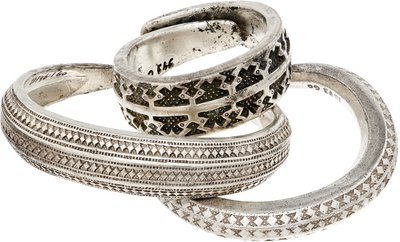Inequality before the law
The inequalities in Viking Age society are clearly apparent in the oldest Scandinavian medieval laws. The laws were written down in the 13th century, but parts of the texts go back to older, verbally transmitted laws. The laws stipulated how different people were valued.
There was no equality before the law. The value of a person’s life was based on who the person was. The value could be translated into a fine, a so-called mansbot – penance or literally “man price.”
It cost less to kill or assault a person of low rank than a person of high standing. And the further from house and home the crime was committed, the smaller the fine. The largest fine was applied if the crime took place indoors.
The Gotlandic law, Gutalagen, sets out the size of the man price for murder and manslaughter as follows:
- Free Gotlandic men and women: 24 marks in silver, about 4.8 kilograms.
- Free, non-Gotlandic men and women: 10 marks in silver, about 2 kilograms.
- Unfree thrall (man or woman): 1 1/8 marks in silver, about 0.225 kilograms.
For major injuries leading to death the fine was divided up into proportions of the full man price. These examples depict a society disposed to violence.
- “For the loss of hand, foot or eye, the fine is six marks in silver for each of these things”, so one quarter of the man price.
- “If the tongue is pulled out of the head and cut off the assailant is fined 12 marks”, that is half of the man price.
- “If a man is wounded in the male member [… and] the shaft is removed, such that the man cannot carry out his necessities except by sitting like a woman, then the fine is 18 marks in silver”, that is three quarters of the man price, being the highest fine after full man price.


